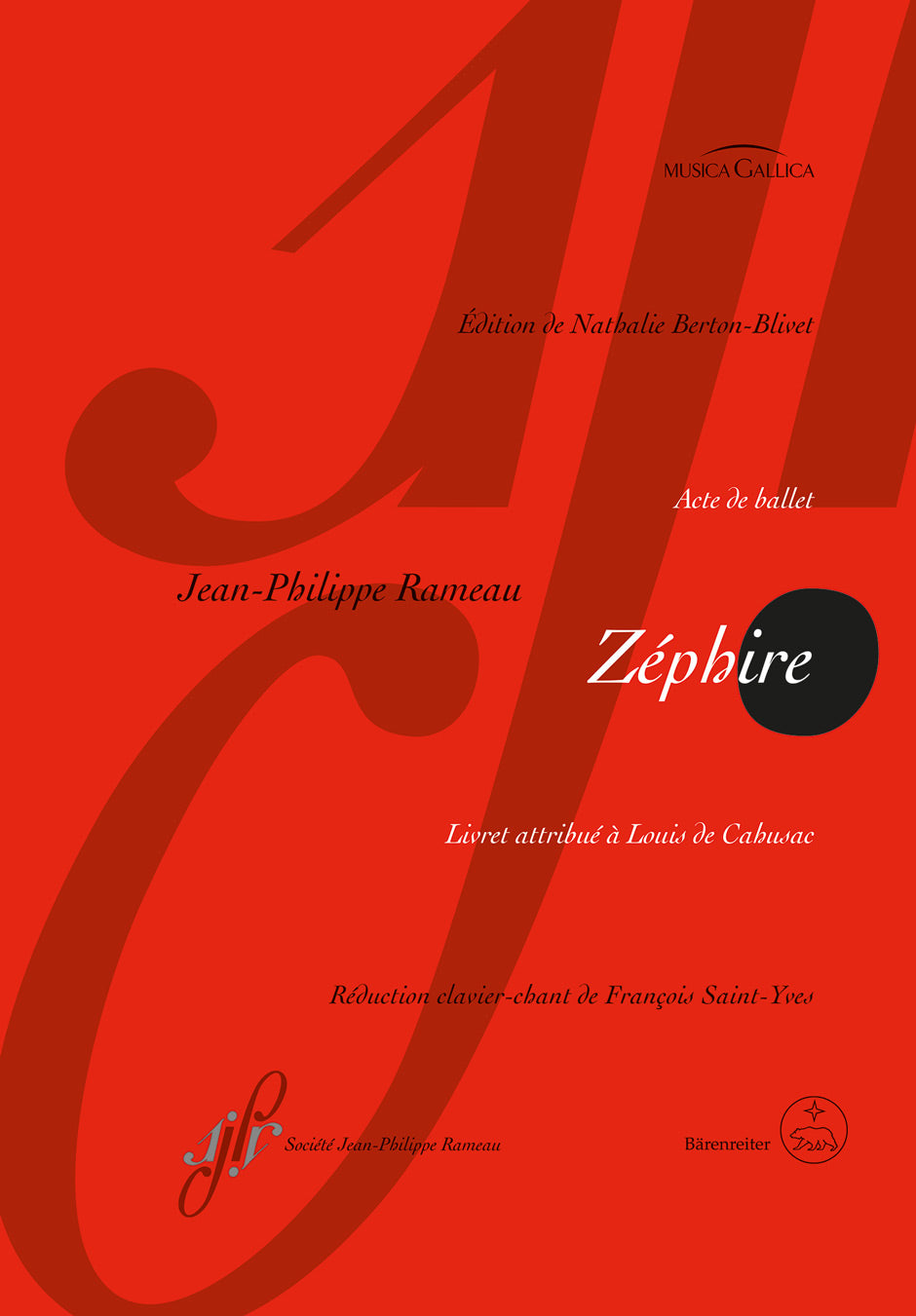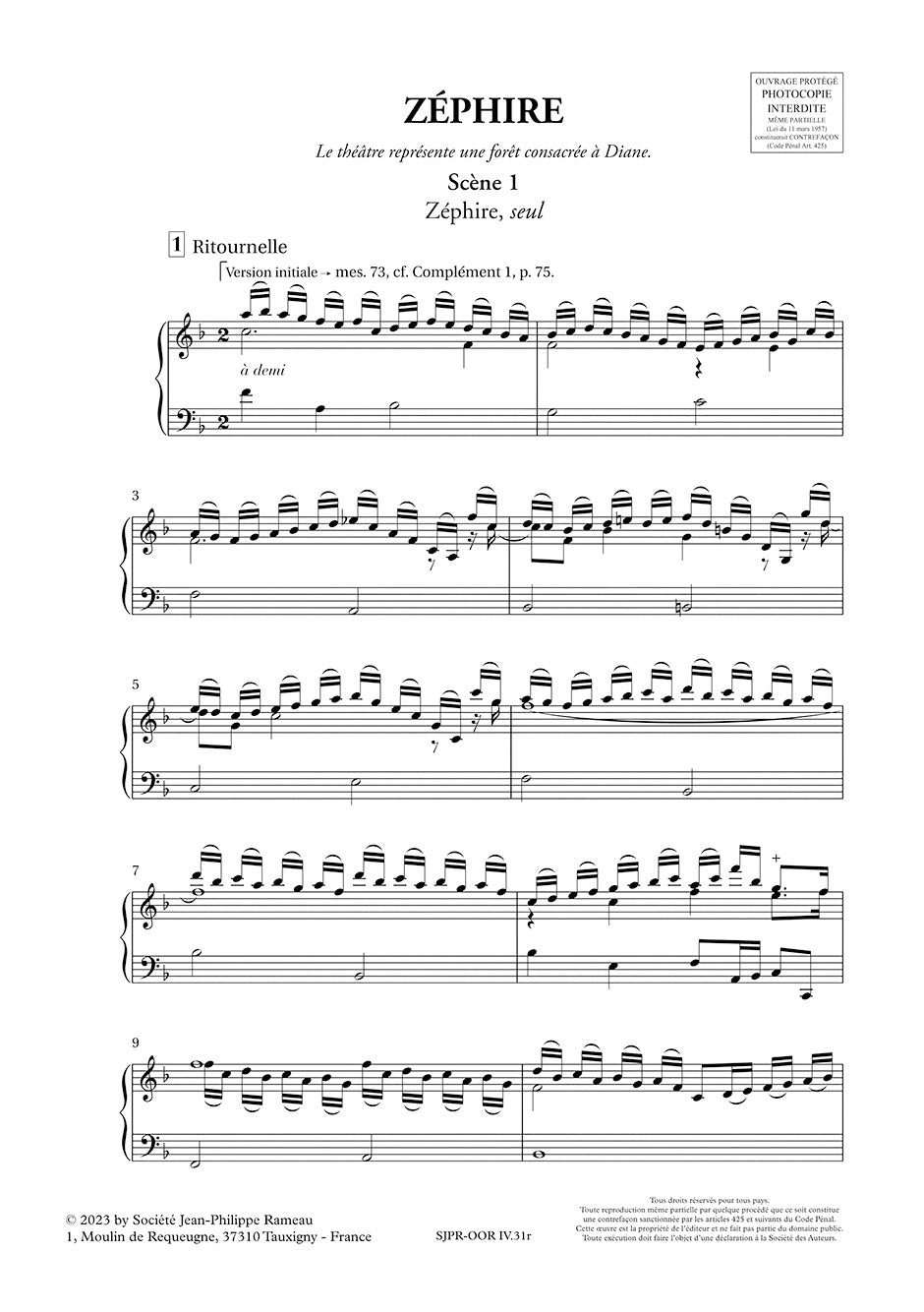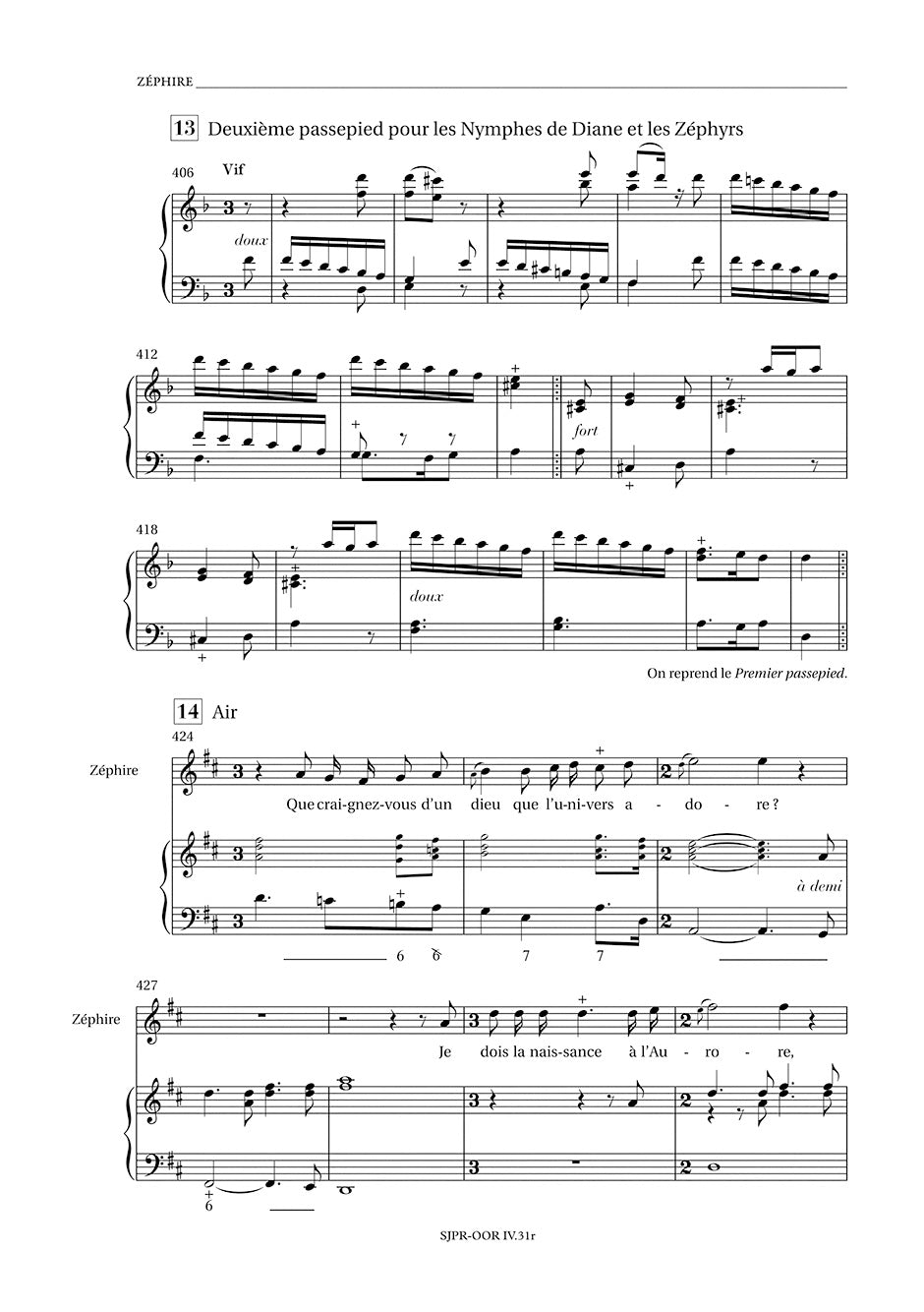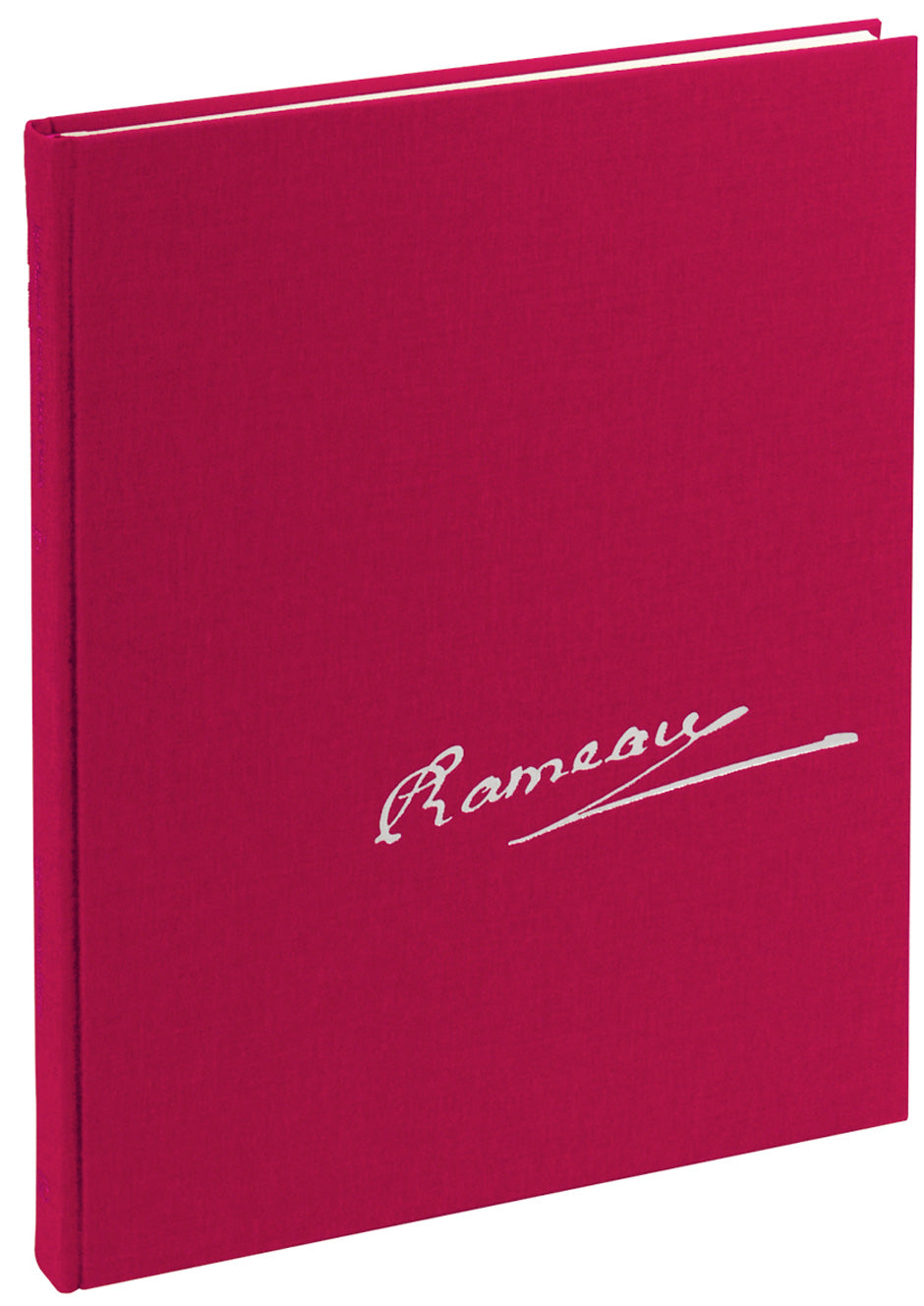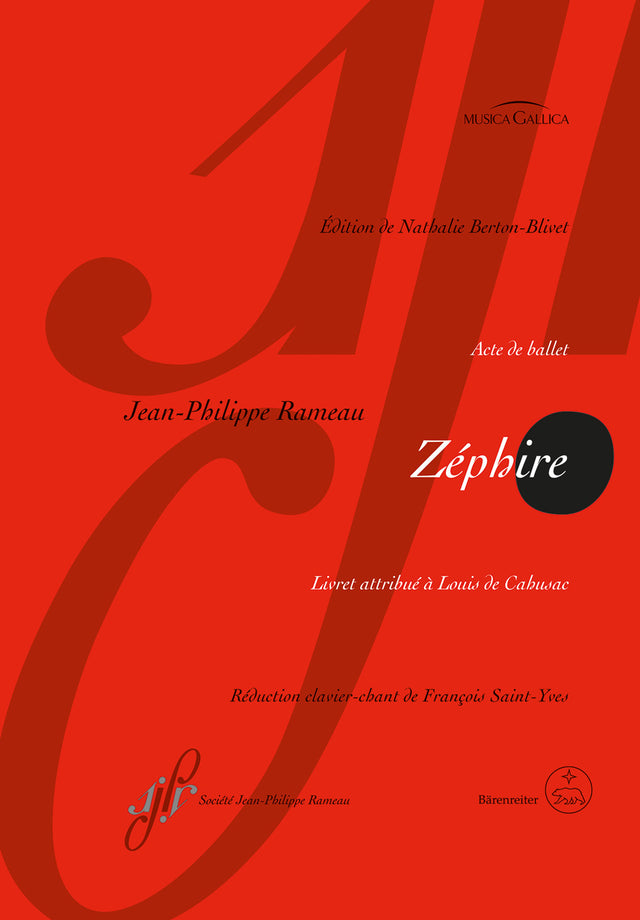Rameau: Zéphire, RCT 61
Expected to ship in about a week.
- Composer: Jean-Philippe Rameau (1683-1764)
- Editor: Nathalie Berton-Blivet
- Piano reduction: François Saint-Yves
- Instrumentation (this edition): Piano Reduction, Voice
- Originally for: Opera
- Work: Zéphire, RCT 61
- Work Language: French
- ISMN:
- Size: 7.5 x 10.6 inches
- Pages: 92
- Urtext / Critical Edition
Description
Rameau's ballet-opera "Zéphire" is based on the legend of Zephire and Flora, as immortalized by Ovid in the fifth book of his "Fasti". Zéphire, the god of the west wind, loves Chloris, a forest nymph of the goddess Diana. Despite the brevity of the dramatic action, the nymphs and zephyrs, the ballet and the chorus, are given great importance in the dances and choruses. in the end, the lovers win the favour of the feared goddess, and Zéphire transforms Chloris into Flora, the goddess of spring.
Similar to "Pygmalion", this ballet act also offers the popular ingredients of Rameau's operas in a compressed form: a fragrant, light orchestral texture alongside delicate, expressive melodies, in addition instrumental numbers of various colours, sometimes floating, then again with rhythmic drive. Interestingly, Zéphire is not cast as a haute-contre in this acte de ballet, but as a soprano.
The many questions surrounding the possible compositional context of this little gem, which was never performed during Rameau's lifetime, are explored in detail in the introduction to the corresponding Complete Edition volume published by OOR. This new critical edition is based on the autograph, which contains several layers of composition. Five appendices also reproduce the original versions in the vocal score, insofar as these could be restored.
Publishers use a lot of words to describe what they sell, and we know it can be confusing. We've tried to be as clear as possible to make sure you get exactly what you are looking for. Below are descriptions of the terms that we use to describe the various formats that music often comes in.
Choral Score
A score for vocalists that only contains the vocal lines. The instrumental parts are not there for reference. Generally, cheaper than a vocal score and requires multiple copies for purchase.
Facsimile
Reproductions of the original hand-written scores from the composer.
Full Score
For ensemble music, this indicates that the edition contains all parts on a single system (there are not separate parts for each player). In larger ensembles, this is for the conductor.
Hardcover
Hardbound. Generally either linen-covered or half-leather.
Orchestral Parts
Similar to a wind set, this is a collection of parts. In the case of strings, the numbers listed are the number of copies included, though generally these are available individually (often with minimum quantities required).
Paperback
When publishers offer multiple bindings (e.g. hardcover) or study scores, this is the "standard" version. If you're planning to play the music, this is probably what you want.
Performance / Playing Score
A score of the music containing all parts on one system, intended for players to share. There are not separate parts for each player.
Set of Parts
For ensemble music, this indicates that there are separate individual parts for each player.
Solo Part with Piano Reduction
For solo pieces with orchestra, this is a version that contains a piano reduction of the orchestra parts. For piano pieces, two copies are typically needed for performance.
Study Score
A small (think choral size) copy of the complete score meant for studying, and not playing. They make great add-ons when learning concertos and small chamber works.
Vocal Score
A score prepared for vocalists that includes the piano/organ part or a reduction of the instrumental parts.
Wind Set
For orchestral music, this is a collection of wind and percussion parts. The specific quantities of each instrument are notated.
With Audio
In addition to the printed music, the edition contains recordings of the pieces. This may be an included CD, or access to files on the internet.
With / Without Fingering (Markings)
Some publishers prepare two copies - a pure Urtext edition that includes no fingering (or bowing) suggestions and a lightly edited version that includes a minimal number of editorial markings.

